

The FLEXnCONFU project consortium is composed of 21 partners
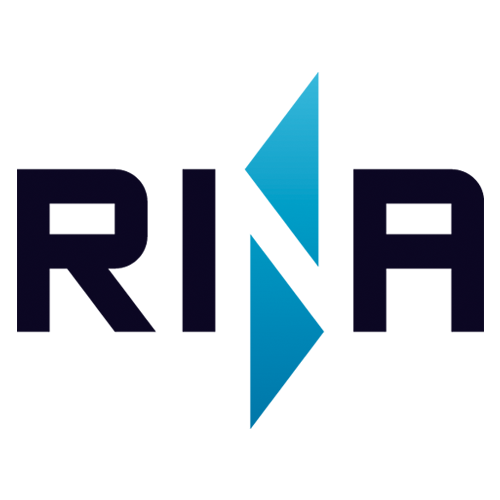
RINA is a global corporation that provides engineering and consultancy services, as well as testing, inspection and certification across the Energy, Marine, Certification, Transport & Infrastructure and Industry sectors through a global network of 170 offices in 65 countries.
Through its 3.700 talented professionals, RINA provides a wide range of high quality tailored solutions aiming to back up the market operators across the entire life cycle of their projects. All RINA services are performed at the highest professional level, understanding and complying with Client’s needs and requirements while taking into due consideration sustainability and health, safety and environmental targets.
RINA is the project coordinator, leveraging its expertise in previous similar projects, and will perform the overall project management in order to establish and maintain a communication and controlling infrastructure. Moreover, RINA-C will contribute to re-design of a T100 mGT combustion chamber as well as its re-adaptation for NH3 combustion. RINA-C is also the responsible of the Health & Safety procedures for FLEXnCONFU Demonstration and replication. Moreover, RINA-C is in charge of the scenario analysis and requirements definition, which implies also the electrical market assessment. Finally, RINA-C is responsible also for the scale-up and replicability of FLEXnCONFU technological innovation, the development of suitable business models and on the exploitation and IPR management.
Alessandra Cuneo, Stefania Marongiu.
“FLEXnCONFU for us is a great opportunity to contribute to the current power plant flexibility challenge towards the creation of a clean and green hydrogen/ammonia society. ”

EDP is a multinational, vertically integrated utility company. With a significant presence in the Energy world, EDP Group develops and manages operations in 19 countries, in 4 continents. With more than 11.700 employees is present throughout the electricity value chain and in the gas commercialization activity.
EDP is the fourth largest wind energy production company in the world and almost 66% of its energy is produced from renewable resources. It provides electricity and gas to more than 11 million customers and has an installed capacity of 27 GW.
The company is the largest electricity generator of hydro and thermal energy in Portugal promoting and managing more than 59 hydroelectric plants and four thermoelectric plants, representing 10GW total capacity installed and leading the supply energy throughout the country.
It has an experience over 40 years of designing, building, operating and management of hydro and thermal Power Plants, as well as know-how in plants retrofitting and environmental requalification, gas and diesel co-generation, biomass and geothermal Power Plants and experience in offboard projects in Brazil, Peru, Spain, Macau, Mozambique.
EDP Produção is the WP5 leader responsible for the demonstration of a power-to-hydrogen system (P2H) in a real operational environment, EDP’s Ribatejo power plant, where a complete system composed by a 1 MW fast-cycling electrolyser, gas compressor and pressurized hydrogen storage will be installed. EDP is involved in all the activities related with the development and integration of P2H system in the existing Power Plant: definition of layout, design of BoP and integration in the P2H, support the development and integration of P2H, support the health&safety procedures for demonstration plant and potential upscale, support the control strategy development and integration, installation, commissioning, start up, monitoring and operational test results of P2H demonstration Plant.
EDP Produção is also involved in other activities such as: evaluation of the impact on the design of combustion chamber for hydrogen combustion and necessary protections, support the activities related with balance of plant innovations, control and dynamics, support the scale-up of FLEXnCONFU concept P2H, support the investigation of other uses for H2 and O2 to enhance the P2H potential and profitability, support the regulatory and non-technical framework analysis, support the flexibility analysis needs and compare between FLEXnCONFU and other flexibility assets, support the LCA/LCC assessment and dissemination activities.
EDP is involved in the Steering and Demo Committees.
Miguel Patena Forte
Paula Morais e Silva Ramos
“Hydrogen can play a decisive and sustainable role in the new world of energy. It can be a solution the so-called last mile of decarbonization.”

EDP Centre for New Energy Technologies (EDP CNET) is a subsidiary of the EDP Group, an integrated energy player, with strong presence in Europe, US Canada, Mexico and Brazil.
EDP CNET, aiming to create value through collaborative R&D in the energy sector, is entirely committed to R&D with a strong focus in technology demonstration projects. EDP CNET has five priority areas: Interoperable Smart Energy Grids, Digital Energy, Flexibility of Power Systems, RES Technologies, Positive Energy Communities. The centre has carried out work in several EU H2020 projects throughout the entire energy value chain, adopting an integrated and sustainable approach towards disruptive solutions that empower its partners and bring value to the shareholders. EDP CNET has proven competencies in cross-cutting topics, such as project management, use cases writing, architecture design, scalability and replicability analysis, new business models’ analysis and development, validation of technologies in laboratory environment and demonstration in real conditions.
Aside from CNET’s activities in the European R&D sector, the centre is actively engaged in international consultancy projects for the developing world mainly focusing on geographical islands.
Based on CNET’s broad experience in coordinating demonstration activities of collaborative R&D projects in Europe, the centre will strongly support EDPP in the P2H demonstrator in Portugal, in close collaboration with all the partners involved in WP5. To that end, CNET will support the entire pilot preparation, installation and operation activities to ensure a sound and meaningful validation of the proposed P2G2P approach.
CNET will further examine the applicable regulatory, safety as well as grid code requirements for the integration and operation of the P2H system in the Portuguese context. Based on this analysis, CNET will ensure that regulatory and safety requirements are met during the definition of the layout and Balance of Plant (BoP) integration of the demonstrator system.
CNET will play an important role in WP6, WP7 and WP8, by (i) supporting the definition of business use cases for the P2H as a source of flexibility for the power system, (ii) investigating other end-uses for the H2 produced in order to enhance the P2H potential, and (iii) evaluating the profitability of the P2H concept according to the different end-uses. In this context, CNET will consolidate and assess the impacts of the demonstrator in terms of increased performances from flexibility and environmental impact and feed these results into the analysis in terms of replicability and commercialisation of the P2H concept.
Paul Kessler, paul.kessler@edp.com
Tommaso Orlandini, tommaso.orlandini@edp.com
“Investigating hydrogen’s potential to flexibilise and decarbonise the future energy system is crucial for EDP and Europe, thus FLEXnCONFU project is an important milestone for Europe’s path transitioning to a cleaner, more flexible and sustainable energy system.”

Hydrogenics, a Cummins Inc. company, is the worldwide leader in designing, manufacturing, building and installing industrial and commercial Hydrogen generation, Hydrogen fuel cells and MW-scale energy storage solutions. While our leadership comes from our technology, our success is the result of the human ingrediënt: it’s our people, our experts who are accelerating a global “power shift” to a cleaner energy future.
We offer world leading expertise for a range of applications, including:
• PEM and alkaline Hydrogen generators for Industrial processes and Fueling stations
• Hydrogen fuel cells for electric vehicles, such as urban transit buses, commercial fleets, utility vehicles and electric lift trucks
• Fuel cell installations for freestanding electrical power plants, critical power and UPS systems (uninterruptible power supply)
• “Power-to-Gas” the world’s most innovative way to store and transport energy
Hydrogenics’ location is in Mississauga, Canada with manufacturing facilities in Germany, Belgium and United States. We have other corporate and sales offices, and Hydrogen installations, operating in several countries around the world.
In this project, Hydrogenics uses its expertise to engineer, build and install a 1 MW hydrogen generating unit containing its latest innovative Proton Exchange Membrane (PEM) technology that uses an ionically conductive solid polymer to split water molecules into hydrogen and oxygen. The unit will be enclosed in an ISO-sea container with all the needed peripherals to provide correct functioning. The system modules will be manufactured and fully tested in Oevel, Belgium before installation on the demo site in Ribatejo, Portugal. Hydrogenics will ensure proper start-up and commissioning activities for the electrolyser plant and will monitor its performance for the complete duration of the project.
Mathijs Tromp, Technical Lead
Wim Dams, Project Management
“Hydrogen has long been called the fuel of the future – the future has begun!”

The Centre for Research and Technology Hellas (CERTH) is one of the largest Research Centres in Greece, located in Thessaloniki and founded in 2000. Its mission is to promote the triplet R&D&I, by conducting high quality scientific research and developing innovative products and services, while building strong national and international partnerships with Industry and Academia. CERTH is essentially self-supported, with an average annual turnover of ~ 25M€, coming from: >60% competitive research projects, >30% bilateral industrial contracts, and only <10% government institutional funding. Over 700 people work at CERTH with the majority being scientists. CERTH has received numerous awards and distinctions and is listed among the Top-20 EU Research Centres with the highest participation in H2020 competitive research grants. CERTH consists of 5 Institutes, out of which Chemical Process & Energy Resources Institute (CPERI), with a wide experience in the Sectors of Sustainable & Clean Energy, Environmental Technologies, Chemical & Biochemical Processes and Advanced Functional Materials, participates in FLEXnCONFU project.
CERTH is the Leader of WP7 concerning the impact and benchmarking analysis of FLEXnCONFU solutions. Especially, CERTH is the Leader of Task 7.2 “LCA/LCC assessment of the FLEXnCONFU concept”, evaluating the impact of the proposed solutions from both economic and environmental point of view, through conducting LCA according to pertinent standards (ISO 14044), incl. all intermediate stages (manufacture, operation and end-of-life) of key parts of the examined processes, as well as LCC of the proposed pathways to assess the contribution of each process in the overall cost. In addition, CERTH is Leader of Task 7.4 “Social acceptance and readiness for FLEXnCONFU solutions (s-LCA)”, evaluating FLEXnCONFU solutions from a social life cycle perspective, via screening global and national social aspects (ISO26000) and s-LCA case studies and assessing dedicated questionnaires to stakeholders. Moreover, CERTH has a major contribution to Task 3.3 “Control development (P2H/P2A)”, undertaking the development of algorithms for advanced, model-based, feedforward control techniques instead of the conventional feedback ones.
Dr. Nikolaos Nikolopoulos, n.nikolopoulos@certh.gr (Scientific Responsible)
Dr. Dimitrios Rakopoulos, rakopoulos@certh.gr (Project Manager)
“FLEXnCONFU project aspires to establish Hydrogen and Ammonia as feasible, efficient and even necessary X factors in the new P2X2P era envisioned by the research and industrial community”

Baker Hughes is an energy technology company focused in developing and deploying the technologies to take energy and industry forward. The FLEXnCONFU program will be developed inside the product company “Turbomachinery and process solution (TPS)” of Baker Hughes based in Florence (Italy).
The TPS organization collaborates closely with the customers and partners around the world to innovate and deliver differentiated products and full lifecycle services to optimize availability and reliability in mechanical-drive, compression, and power-generation applications. Built on deep technical expertise and the proven ability to execute large, complex projects, TPS offers some of the most advanced technology and service solutions. As the OEM, we know our technology in depth. Our long-term service agreements, innovative digital analytics, asset monitoring control systems, and condition-based maintenance help our customers reduce OPEX and improve productivity.
The main scope of work of Baker Hughes is divided in two topics:
• Technical definition of a combustion system that allow to burn ammonia, starting from the one already available for natural gas fuel, investigating different percentages of fuel composition, up to 100%.
• Environmental Health and Safety (EHS) assessment for the safety of the infrastructure and of the operators during operations of the machine fuelled by ammonia.
Paolo Bruttini
Egidio Pucci
“Contribute to design the energy transition process!”
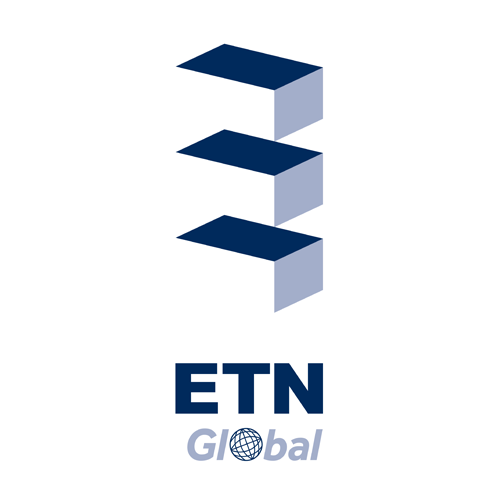
ETN is a non-profit membership association, which brings together the entire value chain of turbomachinery technology worldwide.
ETN addresses the main challenges and concerns of gas turbine (GT) users in committees and individual projects, composed of experts across the entire value chain: power generation and oil & gas companies, OEMs, R&D institutes, suppliers, service providers and technology consultancies.
ETN believes a common strategy and research effort between all stakeholders, along with supportive EU energy and research policies, will enable growth and increased competitiveness of the gas turbine sector in Europe and globally.
ETN leads the WP8 - Dissemination, Communication and Exploitation. ETN is in charge of dissemination and communication activities and it supports the activities on stakeholders engagement and market analysis.
Simon Gianordoli - Project Officerr sg@etn.global
“FLEXnCONFU: an innovative solution to supply reliable, secure and decarbonised energy! ”
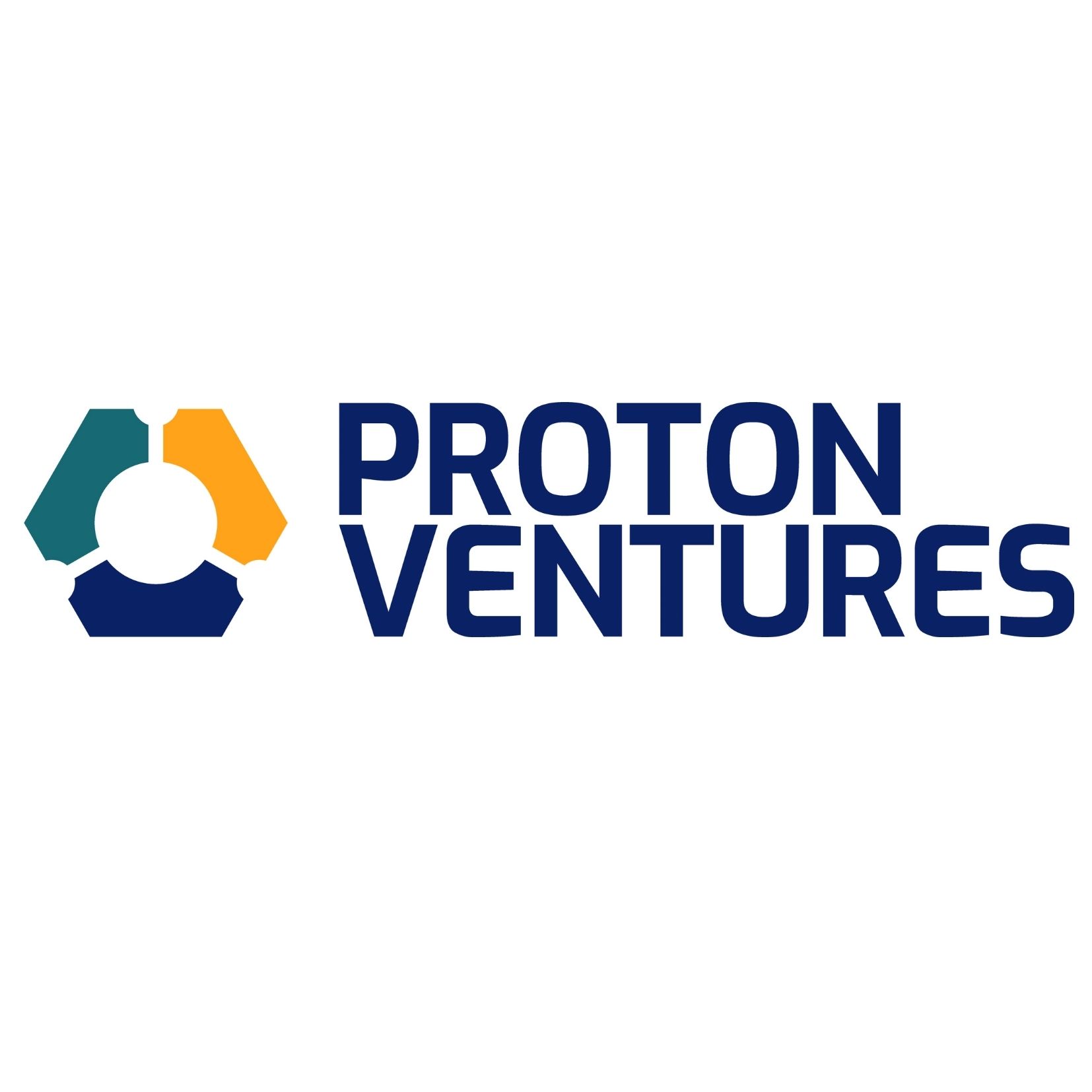
Proton Ventures B.V. is an engineering company specialized in ammonia related technology and products. Proton is experienced in building and running pressurized and refrigerated ammonia terminals. Furthermore, it has experience in storage concepts as part of the energy transition next to fertilizers for agriculture and horticulture.
About ammonia
Ammonia (NH3) is a compound composed of a single nitrogen (N) and three hydrogen
(H) atoms with a boiling point of -34° C. Ammonia is one of the most commonly
produced industrial chemicals and is used in a wide range of industrial sectors. About
80% of the global ammonia production is consumed by the fertilizer industry.
Other common uses of ammonia are as intermediate for fibers & plastics, pharmaceuticals, pulp & paper, refrigeration and cleaning. Ammonia has a high potential as energy carrier or carbon free fuel. Ammonia also has a high potential as
energy carrier (power-to-ammonia)
Proton Ventures is involved in the WP4 part of the programme. This part aims to built a pilot facility at the site of the University of Genua, showing the chain of renewable power through electrolysis of water, subsequently synthesizing ammonia. Proton Ventures designs the synthesis package from a hardware point of view, focusing on the synthesis reactor. We will support the partners when it comes to the integration and catalyst selection. For these activities our experience in the field of ammonia will be applied. The necessary design and modelling work is carried out in-house.
Jacco Mooijer
Gerard van Zee
“Let’s make the world embrace ammonia as the #1 Power-to-X solution! ”
“”
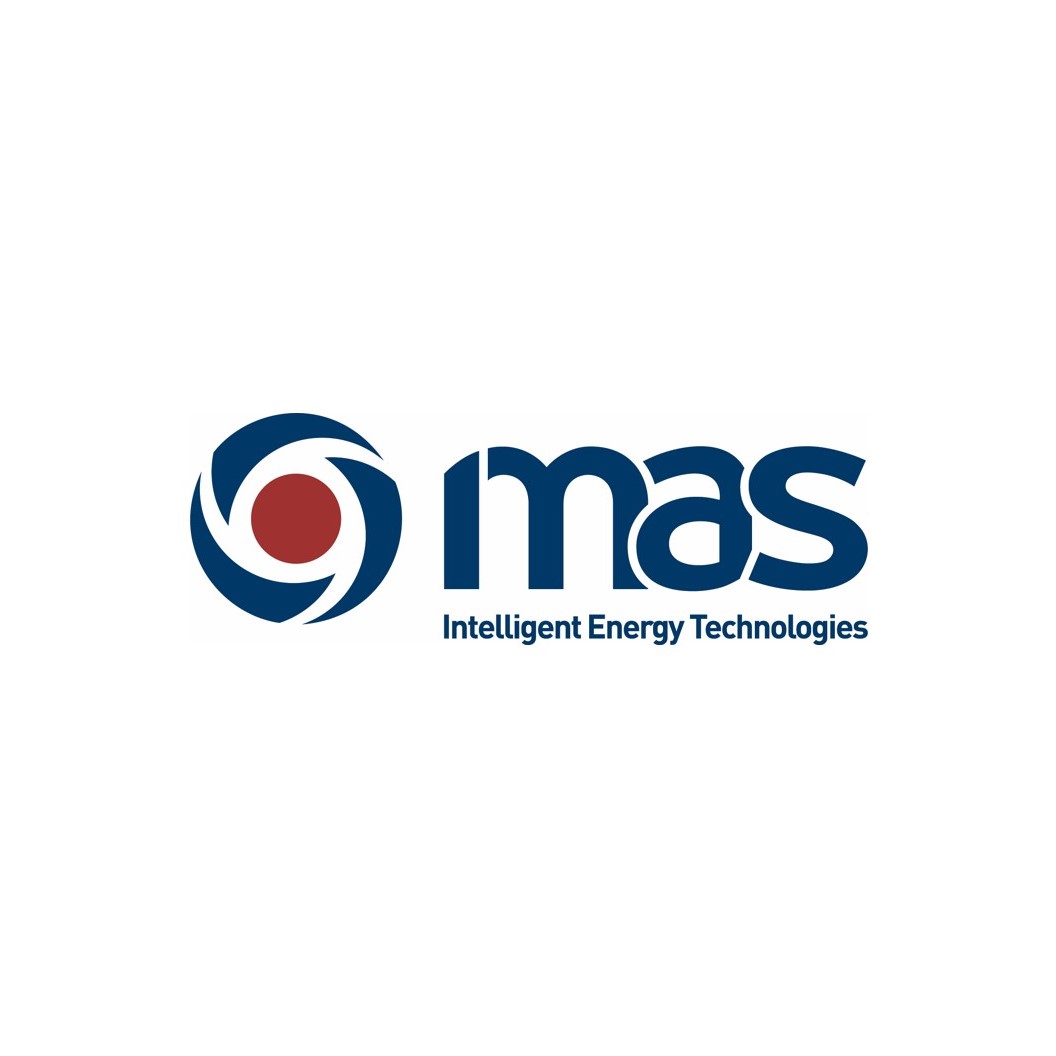
MAS belongs to a niche group of European companies specializing in the design, development and deployment of advanced Automation, Control, Protection and Supervisory systems for the sectors of Power Production, Heavy Industry, Oil & Gas, Marine & Transport.
With a wide commercial coverage and an extensive engineering competence for over 45 years, we undertake complex projects on a turn-key concept, offering total sales and technical support in a wide international area.
Quality and reliability are not just words for us, as strict procedures of ISO 9001, 14001, 18001 and 27001 are enforced. We work with leading manufacturers to deliver the best techno-economical solutions for any technical challenge.
We are part of the Woodward group and thus part of the biggest manufacturing group for controls, protection, and monitoring solutions for prime mover machinery. We are the Exclusive Representative, Central Distributor Facility, Business Partner, and Training Center for Woodward in 26 countries and the second company in Europe to be a Recognized Turbo Retrofitter (RTR). As a result, we are in position to issue OEM world-wide guarantee for all projects we deliver.
In the current project MAS will analyze the control requirements, automation and SCADA systems that will be used in the pilot site (TRL6-P2A) and demo site (TRL7-P2H), while developing and implementing the corresponding optimum control systems, moving a step forward than the currently available ones. Mas will also support controls installation, commissioning and monitoring.
Mrs Ourania Konstantinidou Admin Leader OKonstantinidou@maseurope.com
Mr Marinos Ritsoudis Tech Leader MRitsoudis@maseurope.com
“Let’s control power and built a greener future for all!!!”
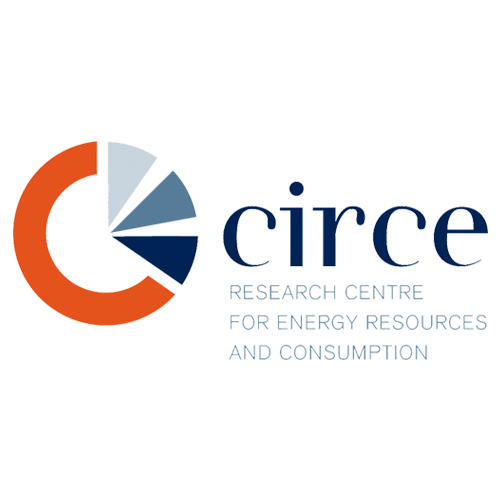
CIRCE Foundation (Centre of Research for Energy Resources and Consumption) is a Research Centre which has, as main core business area, the aim of competitiveness of enterprises through generation of technology transfer.
Established in 1993 as an independent Research Centre to create and develop solutions and scientific/technical knowledge and to transfer them to the business sector in the field of energy. CIRCEs mission is to drive forward improvements in energy efficiency and to spread the use of renewable energy by means of the development of R+D+I activities and formative actions, thereby contributing to a sustainable development.
CIRCEs made relevant competencies rely on the renewable energy, electrical grids of the future, Smart of mobility, industry 4.0, energy efficiency and circular economy and sustainability.
As of today, CIRCE has collaborated in more than 67 H2020 projects, being 21 of them coordinated.
CIRCE will lead and supervise WP3 by developing a modeling framework to depict behavior of the main unit processes, namely, the ammonia reactor and PEM electrolyzer, and adequately capture full plant performance upon their integration. Reduced order models (ROMs) will be formulated to simulate operation of the core P2X technology, and full plant assessments carried out to deliver accurate and reliable dynamic models. An optimal configuration analysis and model robustness assessment will be performed by recreating multiple plausible scenarios, which not only consider variability in operating conditions but also fluctuations in the electrical grid’s supply and demand.
To bolster awareness and attain widespread acceptance, CIRCE will also actively collaborate on the project’s dissemination.
Martina del Cerro (Technical lead)
Asier Rueda Hernández (Administrative officer)
“Transferring ideas from concept to practice is one of CIRCE’s innovation pillars and FLEXnCONFU is yet another challenging and enthralling opportunity to assist facilities in achieving their sustainability goals, by introducing state-of-the-art technologies driven by the latest advancements of Industry 4.0.”
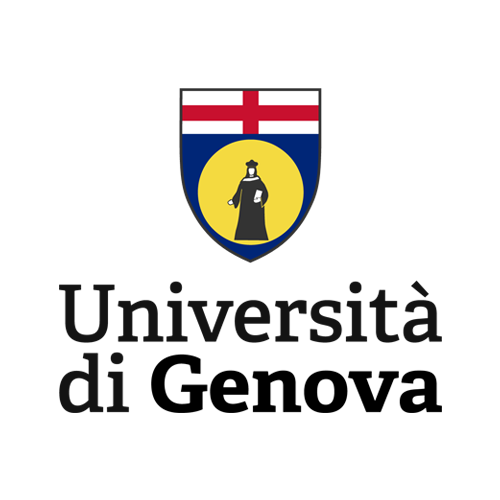
The University of Genoa (UNIGE) is a teaching and research public institution provided with scientific, educational, organizational, and financial autonomy and involved in the building of a European area for research and advanced professional training. It was founded in 1933 by means of Regio Decreto n. 1592 but its history can be traced back several centuries (14th century). UNIGE is now composed of 22 Departments, 5 Schools, 14 Interuniversity Research and Services Centres, 2 Centres of Excellence.
The Department of Civil, Chemical, and Environmental Engineering (DICCA) is part of the Polytechnic School. One of the most active research groups inside DICCA is that of “Chemical Reaction Engineering” where many aspects relevant to chemical process engineering, both of academic and industrial interest, are investigated. It collaborates with other research groups performing theoretical and experimental research in the field of advanced energy systems for power generation and energy storage, with expertise in dynamic performance modelling; thermo-economic analysis; monitoring and diagnostic techniques.
The University of Genoa is the leader of the WP4 - Advanced solutions for Power to Ammonia and will supervise all the activities related to the development of the Power-to-ammonia-to-power (P2A2P) concept that will be developed in collaboration of other important partners (TUDA, PROTON, ICI, RINA-C, MAS). UNIGE will host the demonstrator at its Innovative Energy System (IES) laboratory, providing also the micro gas turbine (mGT) that will be properly modified to be fuelled with the ammonia. It will be a T100 machine available in a flexible test rig in the IES Lab, equipped with several sensors to perform the experimental activity. Moreover, being also the leader of Task 4.5 - TRL6 lab campaign, monitoring, and model validation, UNIGE will be responsible for the installation, commissioning, and test campaign of the integrated P2A2P demo.
Prof. Renzo di Felice
Daria Bellotti, PhD
“The P2X2P system will pave the way to a new generation of energy systems at zero carbon footprint, bridging production, and storage issues.”
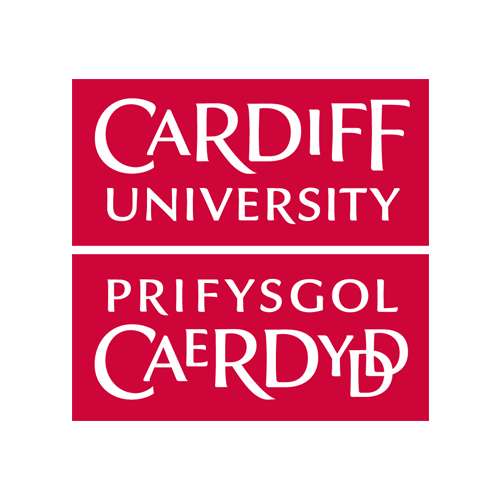
Cardiff University, member of the prestigious Russell Group of research-focused universities in the UK, has a large infrastructure to support the work of its academic faculty, enabling research excellence. Cardiff School of Engineering was ranked top in the UK for Research Impact. The School has a distinguished 40-year history of combustion and thermofluids research, including analysis of flame instabilities, utilisation of alternative fuels and atomisation/spray research, all relevant to a range of industrial applications. The Gas Turbine Research Centre (GTRC) is a Cardiff University offsite large-scale facility donated by QinetiQ in 2007, which consists of a range of bespoke combustion rigs, each designed for detailed investigation of combustion and emissions in gas turbine environments. Being recently upgraded to enable studies of ammonia-containing fuels, these offsite facilities are complemented by smaller-scale combustion laboratories at Cardiff University, recently refurbished to enable ammonia research utilising novel techniques to support FLEXnCONFU.
Cardiff University will perform management and research activities through the project. Leading work package 2 (Combustion system compatibility with non-conventional fuels), Cardiff will organise efforts to determine the impact of natural gas blended with ammonia and/or hydrogen-nitrogen to establish the potential of using these mixtures for medium and large size gas turbines, thus decarbonising peak power production across Europe and assessing the global impact of ammonia-based systems. Simultaneously, Cardiff University will employ its large combustion infrastructure to determine the combustion features of representative systems, thus establishing benchmark studies for numerical and analytical correlations that will inform CFD counterparts about parameters needed for improvement of numerical tools. These tests will be performed at representative industrial conditions and laboratory scales, thus unravelling practical and fundamental details of the use of natural gas with ammonia and hydrogen/nitrogen contents. Improved numerical tools will be employed to advance current systems for stable, low polluting ammonia-hydrogen/nitrogen intake, thus ensuring high impact and understanding of the complex phenomena that take place under these conditions with these blends for future use in commercial equipment.
Dr. Agustin Valera-Medina valeramedinaa1@cardiff.ac.uk
Mr Steve Morris morrissm@cardiff.ac.uk
“FLEXnCONFU will be the milestone to demonstrate the suitability of ammonia/hydrogen blends that will play a crucial role powering the future through combustion processes, enabling Cardiff University to cement the foundations for such an exciting topic across the world. ”
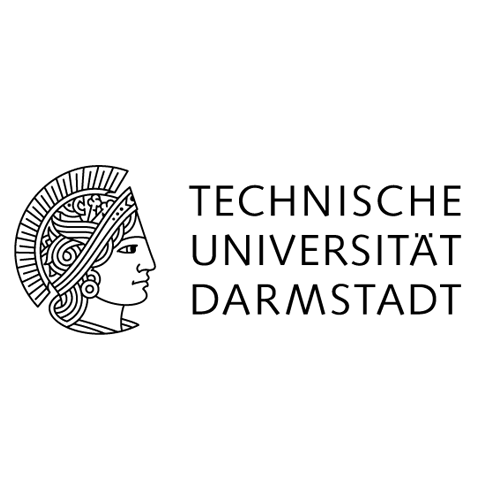
The Institute for Energy Systems and Technology (EST) at the Technical University of Darmstadt (TUDA) in Germany develops technologies for a carbon free future, such as fuel conversion (waste/biomass to fuel/chemicals) and CO2 capture. With its unique 1 MWth fluidized bed reactor pilot plant, TUDA investigates such processes in a real environment, bringing these technologies close to the market. With its high expertise in CFD- and Flow-Sheeting-Simulation, TUDA uses the experimental data for the validation and improvement of such models, enabling a fast and reliable scale-up of these technologies.
TUDA is responsible for Task 4.1 “Innovative small-scale ammonia reactor design” of Work Package 4. Together with Proton Ventures BV, TUDA works on the simulation and design of the low pressure and low temperature ammonia synthesis unit, which will be erected in a container and operated at the University of Genova. TUDA will also support the commissioning of this unit.
Pascal Koschwitz, M.Sc., pascal.koschwitz@est.tu-darmstadt.de
Jochen Ströhle, Dr.-Ing., jochen.stroehle@est.tu-darmstadt.de
“The project addresses one key element of the energy transition towards a carbon-neutral society, which is the long-term storage of energy using a carbon-free energy carrier.”
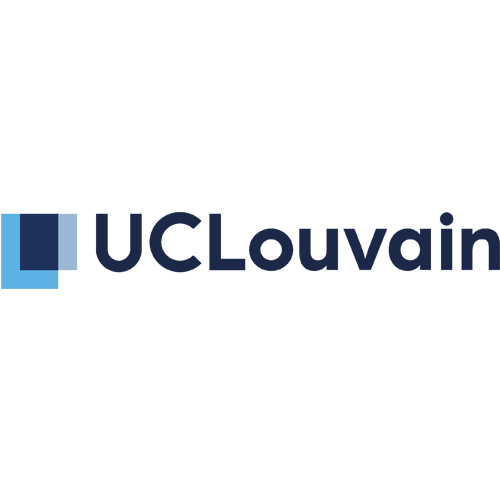
The Institute of Mechanics, Materials, and Civil Engineering (iMMC) of the Université catholique de Louvain with four ERC grants awarded in 2016 and 2017, a panoply of successful spin off companies such as eX-Stream, Axinesis, and WaPT, and several world-recognized scientists, is a leading international center for research in engineering. Its core strengths span several of the major engineering disciplines: energy, thermodynamics, chemical and environmental engineering, materials and processes, structural engineering, geomechanics, manufacturing, fluid mechanics, mechatronics, robotics, biomechanics, numerical and computational sciences. The members of iMMC are involved in the education of engineers at the Louvain School of Engineering (EPL). They contribute to nurturing a new generation of engineers and graduate students, who are prepared and committed to meet the changing needs of our society and forge a sustainable future. iMMC’s research support economy and industry in the fields of aeronautics, transportation, energy conversion, civil engineering, chemical engineering, chemical and biological processes, metallurgy, mechatronic systems and robotics.
The team at UCL will mostly contribute to the Work Package (WP) “Combustion system compatibility with non-conventional fuels”. This WP seeks to study numerically and experimentally the use of ammonia and hydrogen/nitrogenated mixtures co-fired with NG for their use in large GT combustion systems. Understanding of the behavior of these blends will enable to improve commercial combustion systems, aiming at the reduction of unwanted emissions (NOx and CO) while increasing stability.
Within this WP, the team will lead the research on global impact of H2/NH3 based combustion processes. A comprehensive model will be developed to evaluate the contribution of imported synthetic/electro fuels and their usages, as well as the non-energy use of energy vectors. The model will be used in different scenarios considering two objectives: the minimization of the economic cost (LCOE) and the minimization of the Global Warming Potential (GWP). This task will include uncertainty quantification analysis in order to perform robust optimization instead. Considering the uncertainties, it will provide much richer information to policy maker or system designers.
Prof. Francesco Contino, francesco.contino@uclouvain.be
Prof. Hervé Jeanmart, herve.jeanmart@uclouvain.be
“It is not for us to forecast the future, but to shape it. -- Saint-Exupéry”
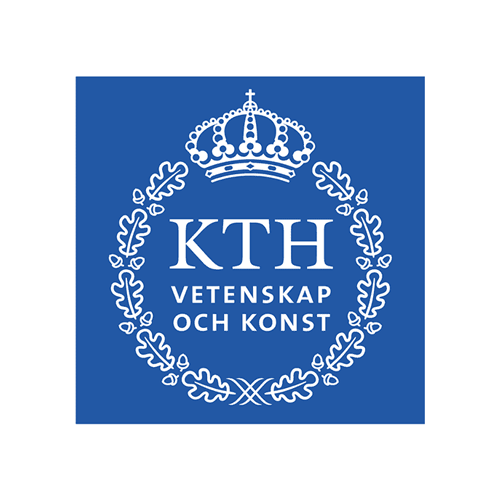
KTH is Sweden’s largest technical university and accounts for over one third of the national capacity for engineering studies and technical research at post-secondary level. KTH has over 12000 undergraduate students, 1400 active postgraduate students and a staff of 3100.
Throughout the years, energy research and education at KTH has held a leading position both in Sweden and abroad. Today, KTH’s commitment in this field is reflected in sheer numbers: over a third of all departments report energy-related activities with an annual accumulated turnover of about €20 million (both external and internal funding sources included). A hallmark of KTH’s efforts is a high degree of collaboration with actors on Swedish, European, and international levels. On-campus energy research and education is conducted in groups located at five departments, encompassing over 150 professors, senior researchers, and Ph.D. students.
The Department of Energy Technology at KTH is partnering in FLEXnCONFU. The department is led by 6 professors and about 20 senior staff members and is engaged in numerous national and international research and development projects educating around 25 graduate students towards their PhD.
KTH is responsible for Task 1.3, which deals with thermo-economic modelling and optimisation of the innovative layouts investigated in FLEXnCONFU. KTH also contributes to tasks 1.4, 2.3, and 2.4, in relation to dynamic modelling and control, and which build upon the thermo-economic models developed in task 1.3. KTH is also participant in tasks 3.5 and 6.2 in relation to validation of the models with demo data, and in performing feasibility studies using the validated models respectively. Ultimately, KTH will also contribute to dissemination activities and exploitation activities.
Dr. Rafael Guédez, Senior Reseracher and Lecturer
(https://www.linkedin.com/in/rguedez/)
José García, Research Engineer
(https://www.linkedin.com/in/jose-angel-garcia-frediani-89424352/)
“FLEXnCONFU is a one-of-a-kind project, and thus very relevant for KTH. It merges multiple stakeholders and integrates paramount research fields for the energy sector, such as the use of ammonia and hydrogen as energy carriers, and the flexibility of combined cycles, which are still to-date one of the most cost-effective technologies to balance intermittency from renewables. ”

CEA (≈ 16 000 employees) is a French government technological research organization. The CEA is active in four main areas: low‐carbon energies, defense and security, information technologies and health technologies. In each of these fields, the CEA maintains a cross‐disciplinary culture of engineers and researchers.
CEA Liten (Laboratory of Innovation for New Energy Technologies and Nanomaterials) is one of most important European research centers on new technologies for energy.
The team joining the project is part of Energy systems and demonstrations lab (LSED) at CEA Liten. The lab holds a strong expertise on hydrogen production technologies both from technical and economic points of view.
There is also a specific knowledge in CEA on high temperature electrolysis and fuel cells, with another lab at CEA Liten working on the technical development of these technologies. More precisely, these technologies include SOEC (Solid Oxide Electrolysis Cells), SOFC (Solid Oxide Fuel Cells) and r-SOC (Reversible Solid Oxide Electrolyzer).
We will work on a task that will investigate the possibility to hybridize the Gas Turbine with a SOFC (Solid Oxide Fuel Cell) able to burn indistinctly H2 or NH3 to produce electricity.
As CEA is developing an innovative technology of SOC (Solid Oxide Cell) able to work in reverse modes (FC – Fuel Cell and EC – Electrolyser Cell), several options of integration will be evaluated:
• Mode 1: Only hybridation with SOFC mode (electricity production from hydrogen/ammonia)
• Mode 2: Replacement of referent electrolyser with SOEC (H2 production possibly for ammonia production process)
• Mode 3: Hybridation with R-SOC (Reverse Solid Oxide Cell) for electricity production (SOFC) and H2 production possibly for ammonia production process (SOEC)
Considering the maturity level of these technologies, this study will be done in a prospective context. Process integration simulations and techno-economic optimisation will be performed in the scope of this task.
Valérie Seguin, R&D engineer and project manager for CEA
“Let’s see if SOEC/SOFC/r-SOC could contribute in the future to make FLEXnCONFU concepts even more efficient!”
Visit Commissariat A L Energie Atomique Et Aux Energies Alternatives
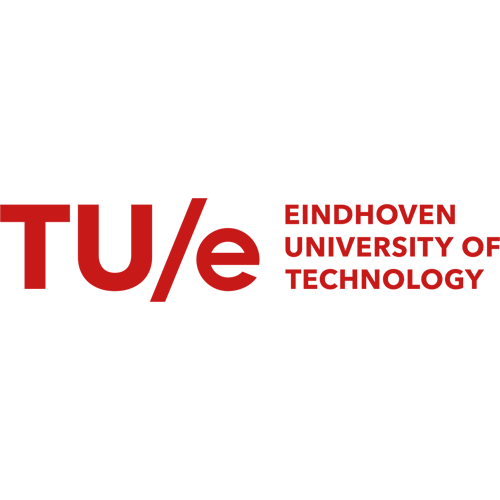
Eindhoven University of Technology (TU/e) is a top-ranked knowledge institute offering research-driven academic education. The 75-hectare campus hosts more than 11,000 students, more than 3,000 employees and almost 2,000 researchers.
The university offers academic education that is driven by fundamental and applied research. The educational philosophy is based on personal attention and room for individual ambitions and talents. The research meets the highest international standards of quality. The limits of science are pushed, which puts them at the forefront of rapidly emerging areas of research.
Scientific curiosity is combined with a hands-on mentality. Fundamental knowledge enables design solutions for the highly complex problems of today and tomorrow. The university understands things by making them and things are made by understanding them. With an open eye for developments in the world around, it aims to be an internationally defining academic institution that pushes the frontiers of science and technology and educates engineers of the future who combine in-depth knowledge about technology with the skills to address challenges out in the world.
The TUE part is contained in the Power & Flow group of the Department of Mechanical Engineering. In the project we develop advanced numerical models for CFD of hydrogen and ammonia combustion. These models are both efficient and accurate, which crucially facilitates the design studies further on in the project and enables us to reach the intended TRL level. They are based on our expertise in chemical reduction, based on the in house developed Flamelet Generated Manifolds method (FGM), which is world-wide recognized as being very powerful) as well as aerodynamic reduction techniques for suitable sub-models for temporal and spatial filtering methods (RANS and LES, respectively). We do this on the basis of a three-way validation: mutual between RANS and LES, Direct numerical simulations (DNS) and available experimental observations from the current project or scientific literature.
Rob Bastiaans
“Clean combustion is a genuine reality and all opportunities should be investigated in research!”
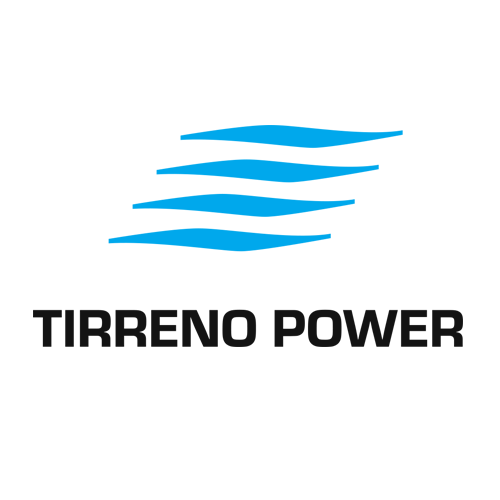
Tirreno Power was established following the liberalisation of the Italian electricity market. Today, it’s one of the largest independent power producers in Italy. The Company is present nationwide with three thermal power plants (in Vado Ligure, Civitavecchia and Napoli) and 18 hydroelectric plants distributed throughout the Ligurian Apennines; its installed capacity is about 2500 MW.
Well in advance of Italian coal phase-out (planned for 2025), Tirreno Power implemented the first sustainable strategy of coal power production exit in Italy, leading the energy transition and focusing on sustainable and flexible assets.
Tirreno Power will support the activities in Task 1.4 providing data for the Italian electrical market. In addition, TP will led Task 7.1 evaluating the flexibility needs of actual power plant. Moreover, they will provide historical operating data regarding the compositions of the power plant gas stream related to different operating conditions of their CCGT as virtual demosite to evaluate pre-feasibility studies.
Alessandro Gaglione – alessandro.gaglione@tirrenopower.com
Giorgio Torelli – giorgio.torelli@tirrenopower.com
“Tirreno Power is proud to be part of this project. We are focused on continuous improvement of our operating performance: we can achieve this goal only through research and applied technology. ”
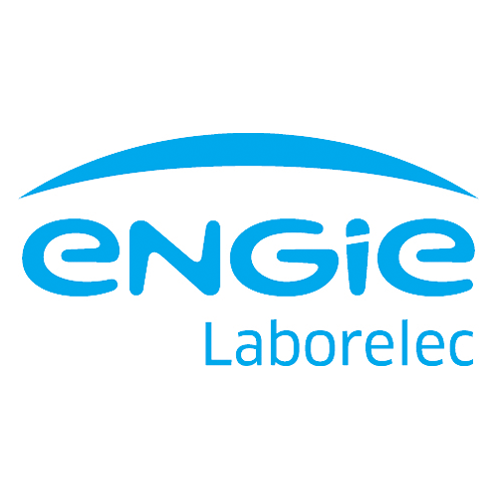
ENGIE Laborelec is a leading expertise and research centre in electrical power technology. Drawing on the skills of 280 highly specialized engineers and technicians, the company is active on the whole electricity value chain and backs a large set of customers in the fields of generation, transmission, distribution, storage and final use, with a particular focus upon the energy transition and the 3 D’s – decentralization, decarbonization and digitalization.
Since its creation in 1962, Laborelec has been a centre of expertise integrated within a larger utility company. Our main mission has always been to help our parent company manage its assets in a sound manner and find cost effective solutions. In recent years, the company has opened up to third parties, and ENGIE Laborelec is now proud to put over 50 years of expertise at the service of a much wider range of customers to reduce the total cost of ownership of their facilities.
Within the Flex’nConfu project, ENGIE Laborelec will bring the expertise of the utility company. We will lead the replication studies in which the Flex’nConfu concept for the combustion of hydrogen and ammonia in a combined cycle plant will be applied to different power plants. ENGIE Laborelec will focus on the feasibility of the concept in the context of a Belgian power plant, both for a brown field and a green field application.
Building upon our expertise in industrial safety, we will also contribute to the safety analysis (HAZOP, HAZID, what-if analysis) required for the two demo plants inside the Flex‘nConfu project.
Finally, ENGIE Laborelec will assess the impact on the lifetime of the gas turbine components of changing the fuel from natural gas to ammonia or hydrogen, as well as evaluate to possibilities to maintain the emissions from such combined cycle plants within legal limits.
Hannes Laget
Sigrid Gijbels
https://www.laborelec.com/contact/
“Flex’nConfu will help us to understand how to use our gas turbine fleet in the energy transition by introducing green hydrogen based fuels.”
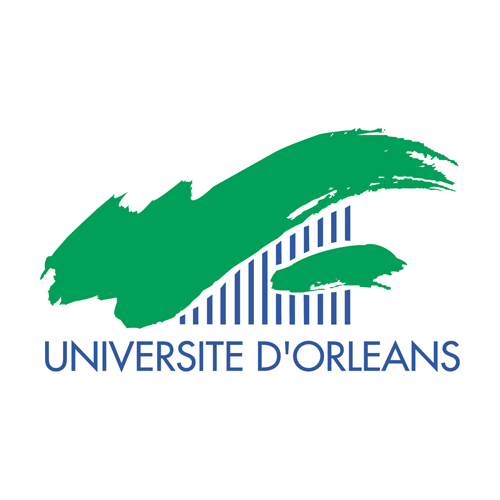
The University of Orléans (UORL), created in 1306, is located in the very center of France, in the Loire Valley. It is a widely multidisciplinary structure, with 3 research and training units, 4 technological institutes, 1 engineering school (Polytech), 1 Teaching and Education Advanced School, and the regional Universe Sciences Observatory. It also encompasses 23 laboratories and 4 doctoral schools; this high research orientation is supported by strong connections with reputed research organisms such as, among others, the French National Centre for Scientific Research.
The research institute of UORL, PRISME aims to provide a consistent scientific strength of Complex Systems Engineering and Engineering Sciences in general. The Energy, Combustion and Engine lab has expertise in carrying out experiments on optical and metallic single cylinder research engines and on high pressure/high temperature combustion vessels. It has developed, jointly with the French car manufacturer PSA, since 8 years, the “Open Lab Energetics and Sustainable Mobility”. One key focus of the lab is on experimental combustion processes (access to combustion chambers via optical techniques), with the goal to evaluate the potential of new low carbon fuels.
This participant will be the role in the project to share fundamental combustion knowledge between the different partners involved in WP4, especially to evaluate the difficulties to expand the use of GT from natural gas to hydrogen or hydrogen/ammonia. A first accurate data base as a function of operating conditions (thermodynamics, air- fuel mixture (fuel as NH3, NH3/H2 and NH3/NG), turbulence) will be provided in order to work with the partners in charge of the development of adapted and predictive model for the use of NH3 in turbine systems. Finally, this participant will lead the task to validate CFD simulation for combustion to avoid the gap between experimental data and modelling activities.
Prof Christine (Mounaïm-)ROUSSELLE, Professor
Dr. Pierre BREQUIGNY, PhD in Mechanical Engineering
“Great objectives, network, think-tank to implement technologies for sustainable future : it is what I expect and like in this project.”

ICI Caldaie is a company with 60 years of history and experience in energy management and heat production, a point of reference among companies operating in the sector of steam generators for industrial processes and heating. The innovative spirit that distinguishes it drives it to invest in research and development in projects that aim to create new energy systems with low environmental impact, exploring new technologies and types of alternative energy sources.
Among the latter, large resources are being invested in the production of electricity and heat from hydrogen for the residential market.
ICI Caldaie is a specialist in the design and production of complete high-tech thermal systems. It associates any type of solution with management systems that allow the reduction of consumption by optimizing the operation of the generator and the connected elements. Furthermore, the long experience has allowed her to create a series of highly qualified services able to satisfy any need related to the management and monitoring of the plant.
ICI Caldaie is involved in both branches of Flexnconfu project, hydrogen and ammonia.
Due to our experience as a designer and manufacturer of industrial plants we will deal with the solution for the storage and processing of the fluids involved.
For the hydrogen part, ICI will develop the integrated system including hydrogen reception, compression, storage and release to the turbine.
For the ammonia part, ICI will develop the integrated system including electrolyser for the H2 production, ammonia synthesis unit, storage and release to the turbine.
Both systems will be managed in complete safety by a separate control system that complies with current regulations.
The system will be designed to be transported and installed in standard containers.
PhD. Carlo Tregambe: carlo.tregambe@icicaldaie.com
Eng. Martino Righetti; martino.righetti@icicaldaie.com
“Identifying solutions suitable for safety, savings and environment protection.”
Input your search keywords and press Enter.